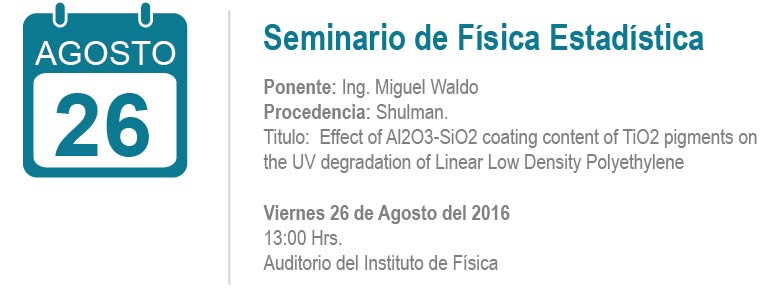
Ponente: Ing. Miguel Waldo
Procedencia: Shulman
Abstract
In this work was to investigate the effect of the surface passivation of titanium dioxide
(TiO2) pigments on the photodegradation performance of linear low density polyethylene
(LLDPE) used in outdoor applications. To do so a, commercial LLDPE containing four
different TiO2 pigments, classified by different levels of Al2O3-SiO2 coatings, were
studied. Specimens were exposed on an ultraviolet (UV) weathering chamber. The
selected exposure condition used was similar to real outdoor exposure at 160 kLy range.
The physical and chemical degradations of the filled LLDPE were monitored at periodic
intervals. Progression of degradation on the LLDPE surfaces was characterized by Atomic
Force Microscopy (AFM) in terms of changes in surface roughness and morphology and
by Universal Mechanical Analysis (UMA) in terms of percentage of retention in elongation
and stress at break of exposed plastic samples. The observed physical changes were
correlated to the chemical changes in carbonyl peak measured by ATR-FTIR as a function
of UV exposure time. LLDPE samples showed less degradation when filled with TiO2
pigment with the highest Al2O3/SiO2 coating content compared to lower coating
contents. It was observed that both the Al2O3 and SiO2 concentration strongly affected
the UV degradation of LLDPE. Finally, when used in combination with the conventional
hindered amine light stabilizer (HALS), Chimassorb® 944, the four different TiO2 pigments
revealed strong synergistic effect during the photodegradation of the LLDPE composites.
The resultant capacity of photostabilization was again higher when TiO2 pigment with the
highest Al2O3-SiO2 coating content was used.










